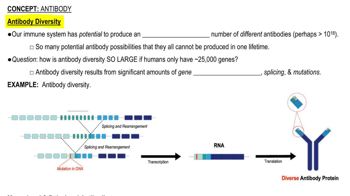Here are the essential concepts you must grasp in order to answer the question correctly.
Endosymbiotic Theory
The endosymbiotic theory posits that certain organelles, such as mitochondria and plastids, originated from free-living prokaryotic organisms that were engulfed by ancestral eukaryotic cells. This theory explains how these organelles have their own DNA and double membranes, supporting the idea of a symbiotic relationship that evolved over time.
Recommended video:
Secondary Endosymbiosis
Secondary endosymbiosis refers to the process where a eukaryotic cell engulfs another eukaryotic cell that has already undergone primary endosymbiosis. This results in organelles, like plastids, that are surrounded by more than two membranes, indicating a complex evolutionary history involving multiple layers of symbiotic relationships.
Recommended video:
Plastid Diversity
Plastids are a group of organelles found in plant and algal cells, including chloroplasts, chromoplasts, and leucoplasts. Their diversity and the presence of multiple membranes can provide insights into their evolutionary origins, particularly in relation to secondary endosymbiosis, where different types of plastids may have evolved from various ancestral lineages.
Recommended video:





